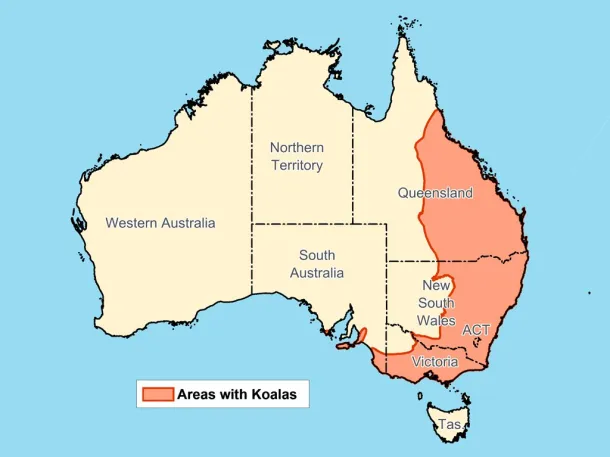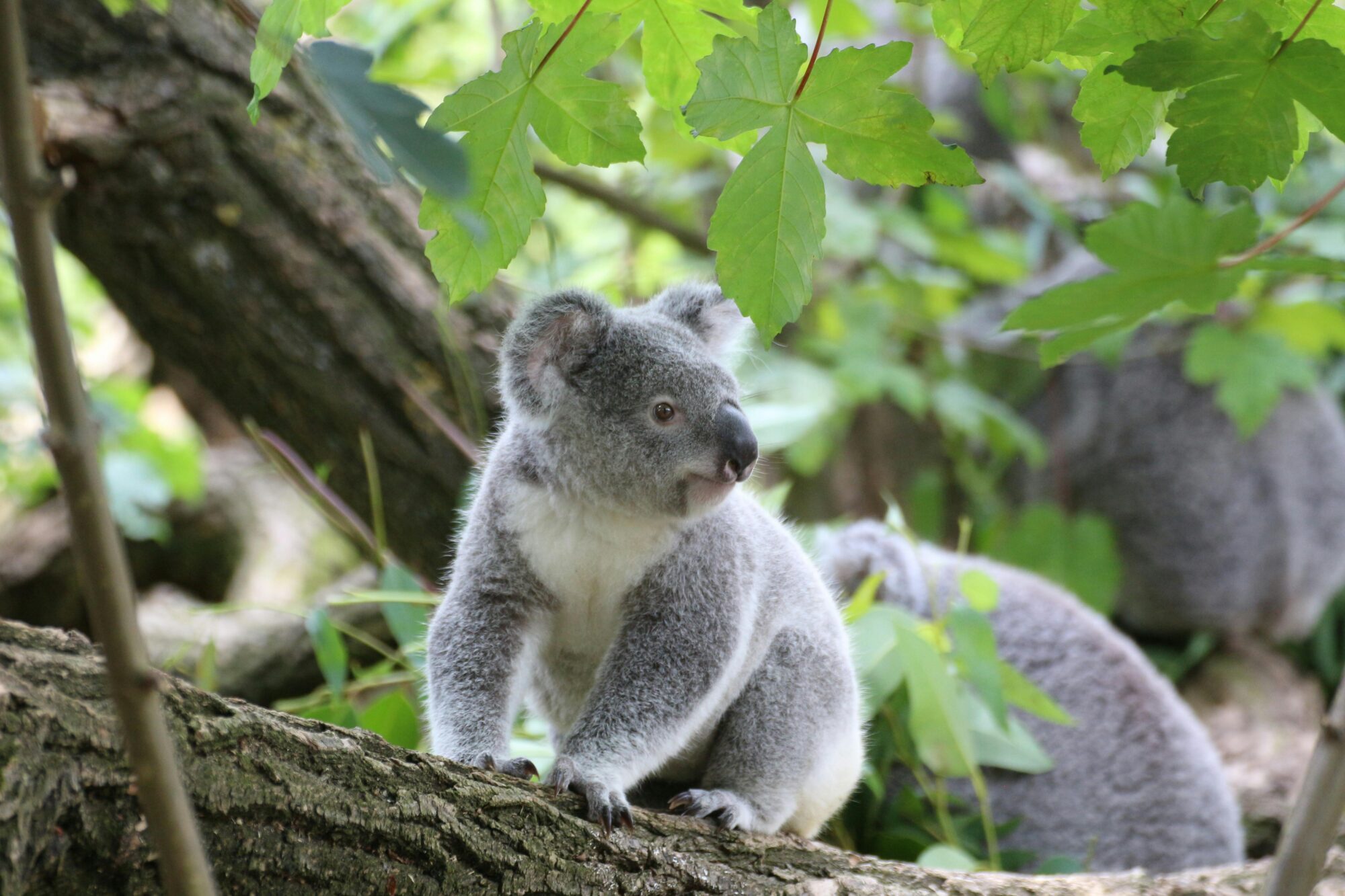THE CUTEST CREATURES HAVE SURPRISING FEATURES
Koalas are iconic marsupials known for their fluffy ears and button noses. Despite being called ‘koala bears,’ they are not bears at all but relatives of wombats and kangaroos. Koalas spend most of their lives in eucalyptus trees, eating up to a kilogram of leaves each day. These leaves provide the moisture they need, so koalas rarely drink water. With their strong limbs and sharp claws, they are expert climbers. Interestingly, koalas have fingerprints almost identical to humans, making them unique in the animal kingdom. Their most notable trait, however, is their sleep—koalas rest for up to 22 hours a day to conserve energy.
Koalas Aren’t Bears
Despite often being called “koala bears,” koalas are not bears at all! They belong to a group of mammals called marsupials, which means they carry and nurse their young in a pouch—just like kangaroos and wombats.
They Sleep Up to 22 Hours a Day!
Koalas are true nap champions! Their diet consists mostly of eucalyptus leaves, which are low in nutrients and take a long time to digest. This means koalas need to conserve energy, leading them to sleep for up to 22 hours a day.
They Rarely Drink Water
The word “koala” comes from an Aboriginal term meaning “no drink.” This is because koalas get most of their water from eucalyptus leaves. However, during extreme heat or droughts, they will drink from water sources when necessary.
Koala Habitat
Koalas inhabit the eucalyptus forests of eastern and southeastern Australia. These forests provide food, shelter, and safety from predators. Unfortunately, koala habitats are under constant threat. Urban development, agriculture, and logging have significantly reduced their natural environment, leaving many koalas isolated and vulnerable. Without healthy forests, koalas struggle to find food, reproduce, and survive. Protecting these habitats is essential not only for koalas but for the entire ecosystem that depends on these forests.
EUCALYPTUS TREES PROVIDE KOALAS WITH HYDRATION
Koalas get most of their hydration from eucalyptus leaves, as they contain a high water content. However, prolonged droughts and tree die-offs can leave koalas dehydrated and struggling to survive.
DEFORESTATION IS A MAJOR THREAT TO KOALAS
One of the biggest dangers to koalas is habitat loss due to deforestation, urban expansion, and agriculture. As their natural environment shrinks, koalas are forced to travel, increasing their risk of predation and vehicle collisions.
BUSHFIRES HAVE DEVESTATED HABITATS
Wildfires, particularly in Australia’s dry seasons, can destroy vast areas of koala habitat, leading to population declines. After severe fires, conservationists work to rehabilitate koalas.
AUSTRALIAS MOST BELOVED ANIMAL
Koalas may be one of the most iconic and beloved animals in the world, but there’s a lot more to them than just their cuddly appearance. These fascinating marsupials have unique traits, surprising abilities, and even some hidden dangers in their lives. Let’s dive into the world of koalas and uncover some of the rarest, funniest, and most serious facts about these eucalyptus-loving creatures.
Koalas are primarily found along the eastern and southeastern coasts of Australia, inhabiting eucalyptus forests and woodlands. The densest populations exist in Queensland, New South Wales, and Victoria. Studies estimate that there are between 40,000 and 80,000 wild koalas left, though numbers continue to decline due to habitat destruction. One shocking fact is that urbanization has led to isolated koala populations, making it harder for them to breed and find food. The introduction of wildlife corridors and conservation parks has helped, but habitat loss remains their greatest challenge.

Current and Future Efforts to Protect Koalas
Koalas are fascinating creatures with many surprising traits. From their incredible sleeping habits to their unique fingerprints, these marsupials are full of hidden wonders. However, their future is at risk due to habitat loss and disease, making conservation efforts more important than ever. So next time you see a koala, remember—there’s much more to them than meets the eye!

